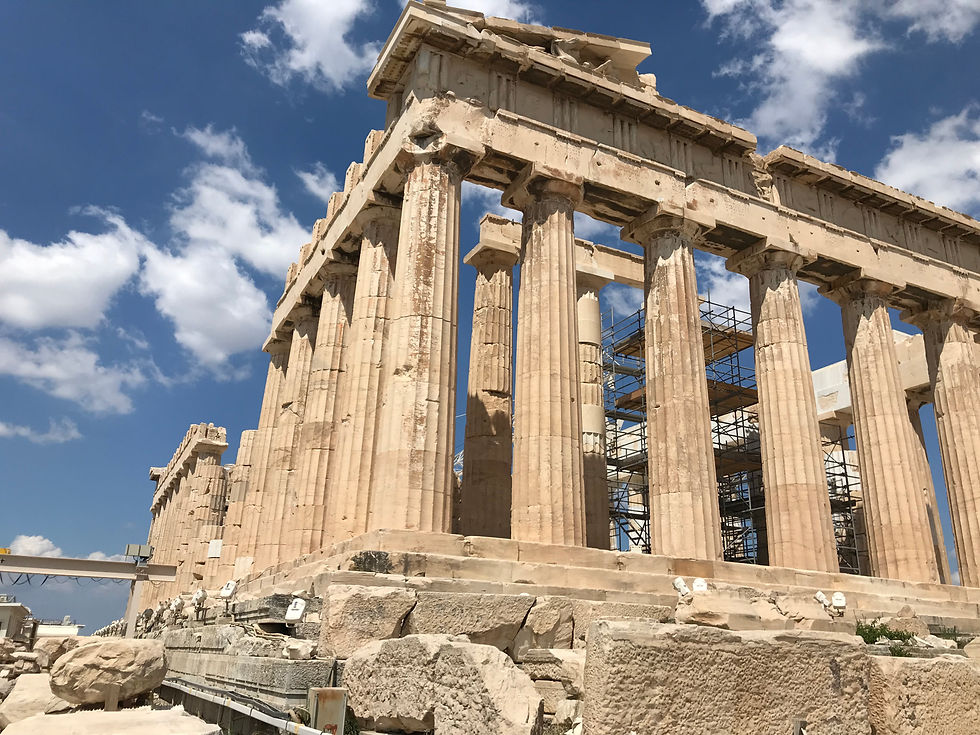Beautiful Borneo
- Jody Ferguson

- Jun 18, 2020
- 3 min read
Updated: Dec 12, 2022
People often ask me, “What’s the most interesting/fun/charming/recommended country you have visited?” The answer is always tough, because different people are looking for different things to see and do. But I usually answer accordingly, after finding out what they may want to see. Some want to see big cities. Some want museums. Some want history and archeology. Some want novel dining experiences. Others want to explore the countryside and take in nature. But after I tell them what they want to hear, I usually tell them that no place has ever captivated me like Borneo. And what I also tell them is that what I did there during my visit could probably not be repeated today, due to deforestation, over-crowding, and expanded tourism (mainly from China). I traveled to Sarawak and Sabah (the Malaysian half of Borneo) in the early 1990s. During my time there I climbed a 13,000 foot peak, explored one of the largest cave networks in Southeast Asia, hiked through pristine rain forests, climbed among massive limestone karst towers, and scuba-dived off one of the world’s great oceanic islands, which Jacques Cousteau once called “an untouched piece of art.”
Mount Kinabalu is a dramatically bare granite mountain, towering over a verdant rain forest. As you sit at the summit taking in the sunrise, the clouds below you cover the green canopy of the rain forest, but they begin to part as you make your descent in the morning sun. At one point as we descended from the peak, we could see below us, far in the distance, a jet liner making its way across the massive island, which is the world’s third largest, slightly larger in area than Texas. The Gunung Mulu cave network is almost unfathomable in its scope. Close to 300 kilometers of explored caves, which include various flora and fauna, as well as some old cave paintings (the Niah caves). There is evidence of man having lived in this cave network as long as 40,000 years ago.

In one of the most famous caves as you enter and look back, you can catch a glimpse of a profile that resembles Abraham Lincoln (see photo). In the national park that surrounds the cave network you can hike through a primary growth rain forest, that literally glows at night with phosphorescent mushrooms and moss blooms. The cacophony of birds and (at night) insects is indescribable in these jungles—especially the great big Hornbills, a large tropical bird that literally crashes through the jungle canopy. Borneo has the second largest rain forest in the world after Brazil. During the day the light filtering through the trees is so green you can almost touch it. As we hiked up to the karst formation known as “the Pinnacles” (which stand like sheets of white fire that have sprung up on the mountainside) we were able to able to quench our thirst with a network of cold, fast flowing streams. I was hesitant to do so when our guides told us we could drink the water. Accompanying us, however, was a member of the Royal Geographic Society, who assured me it was okay.


You can see Peter from northern England (with the beard) in the photo along the river as we consult with one of our guides. Check my leap from a waterfall! We also visited an orangutan relocation center and saw those magnificent primates in the wild.
The highlight of the trip was undoubtedly Sipadan Island off the northeast coast of Borneo in the Celebes Sea. The diving I experienced there can probably never be repeated. I have dived all over the world in some of the top destinations (Maldives, Philippines, Bonin Islands, Okinawa, the Red Sea, and both coasts of Mexico), but nothing has compared. We swam with scores of greenback and hawksbill turtles, we saw manta rays, whale sharks, and at one point found ourselves amidst a swirling school of more than one hundred barracuda.
The photos can never do justice to what I saw there. Having written this now more than two decades later, I really want to get back to Borneo someday.























Comments